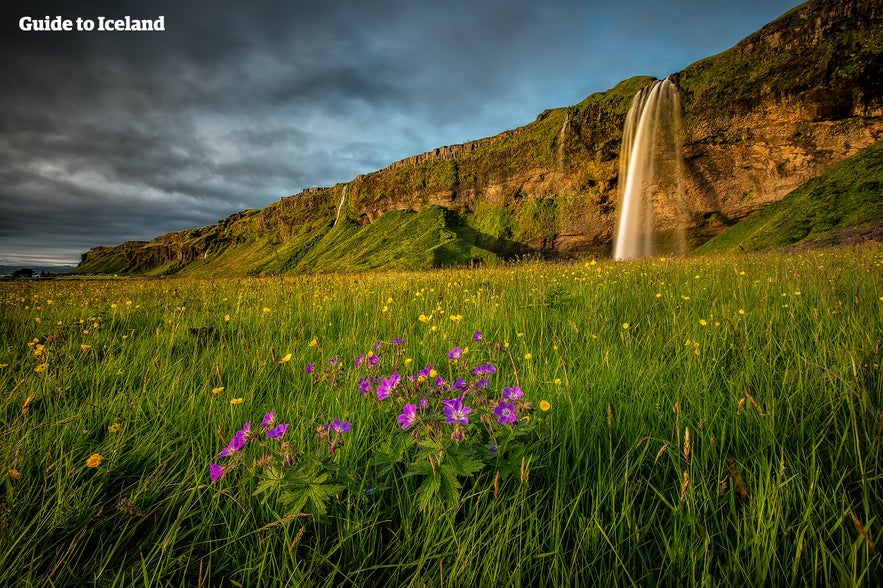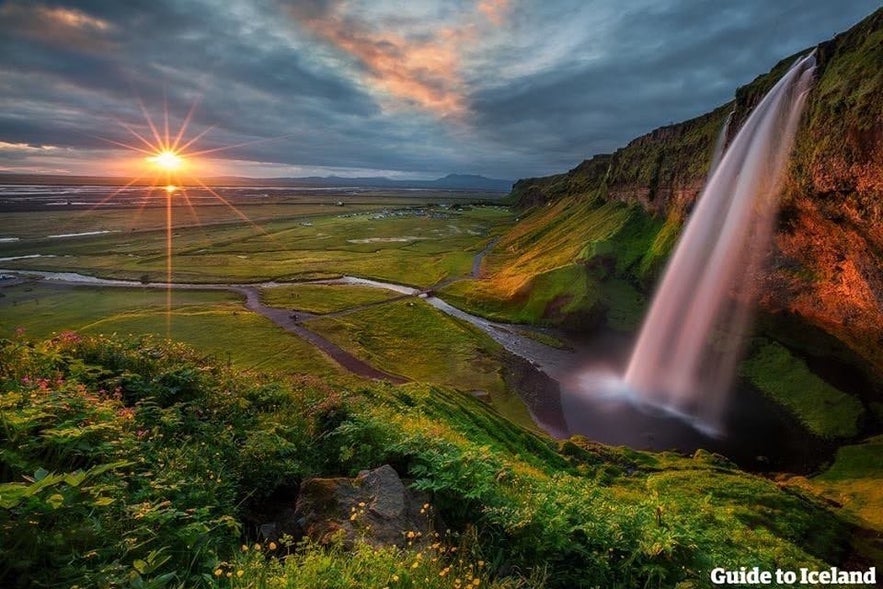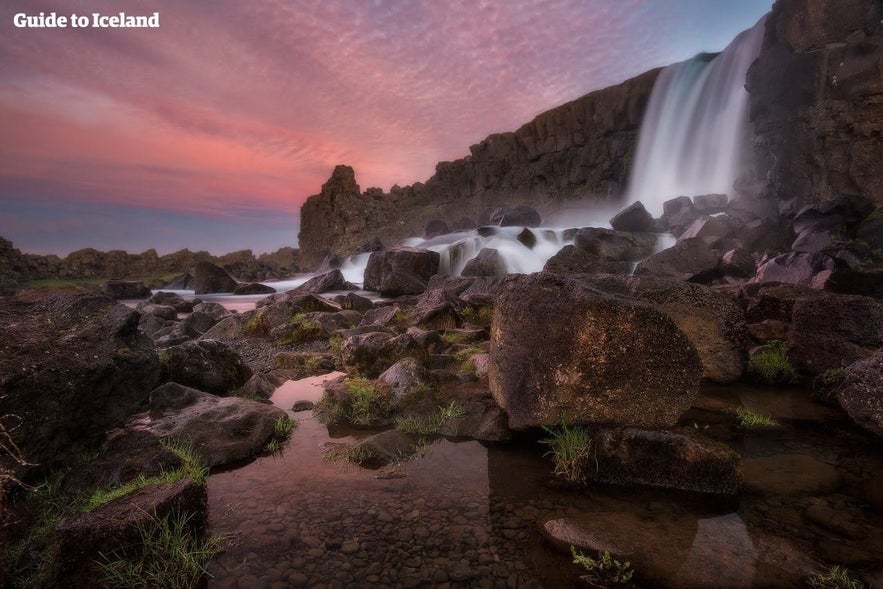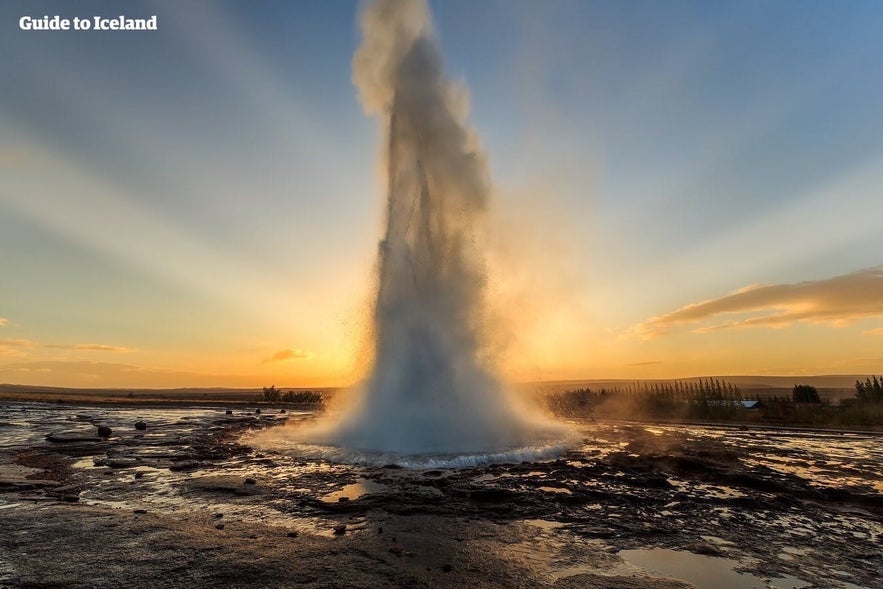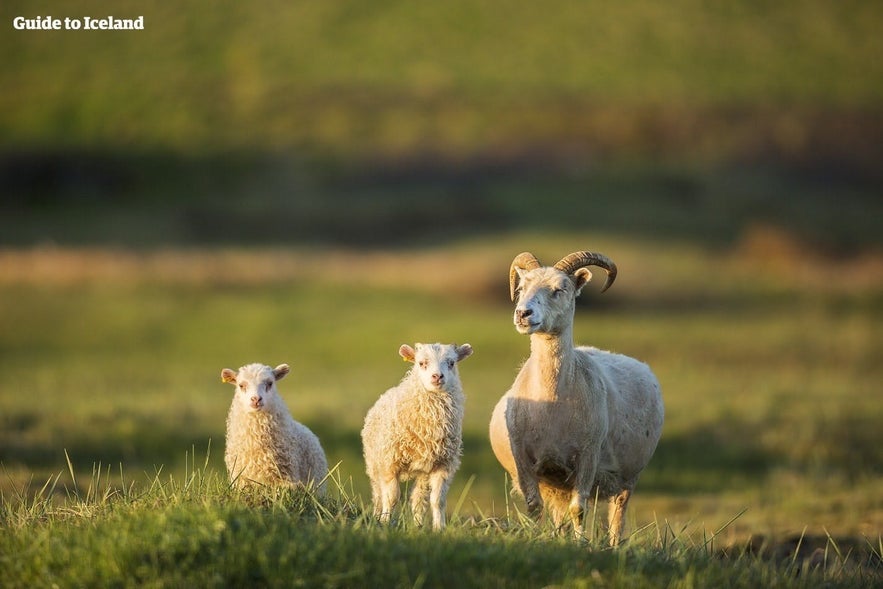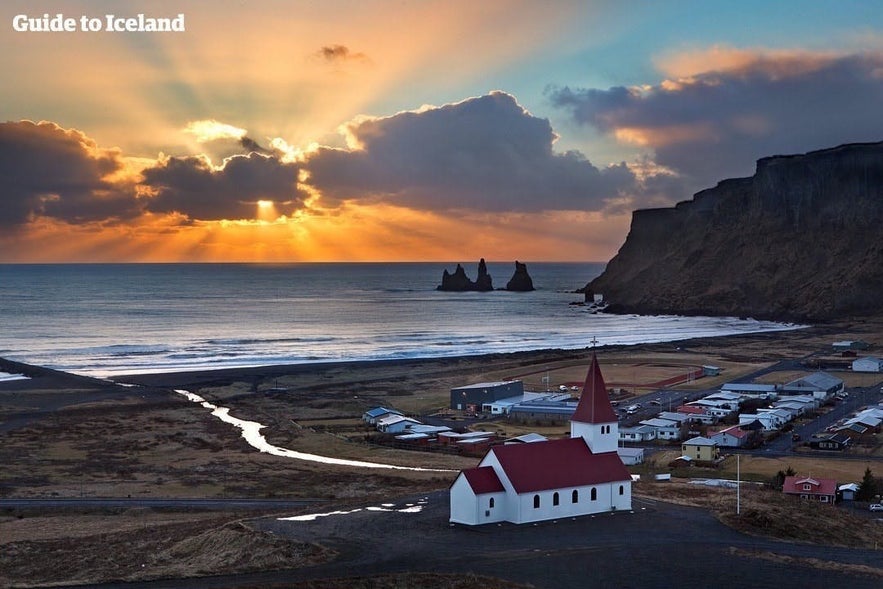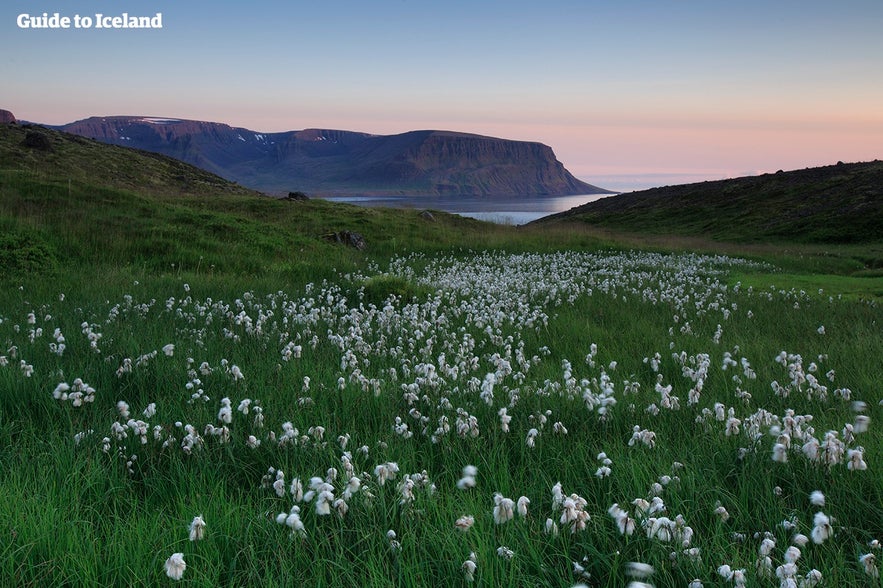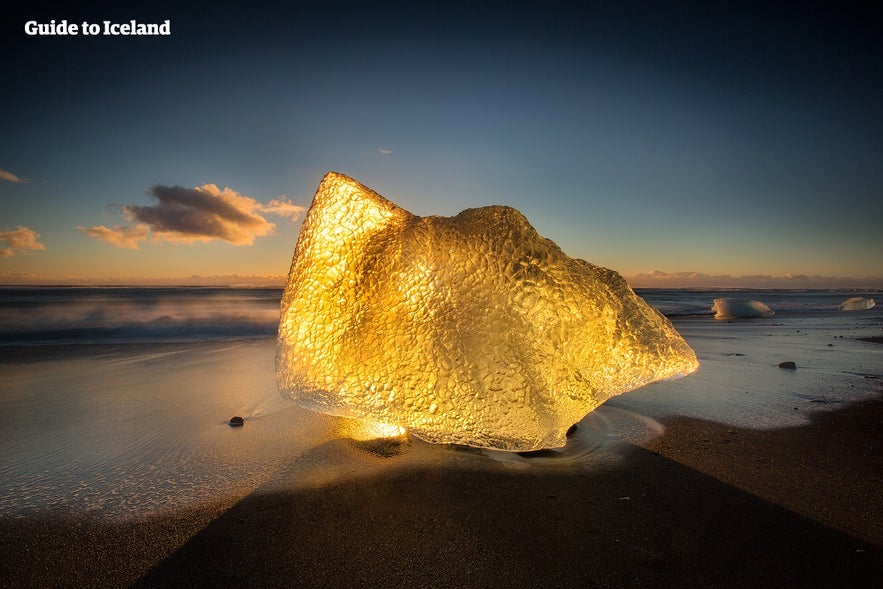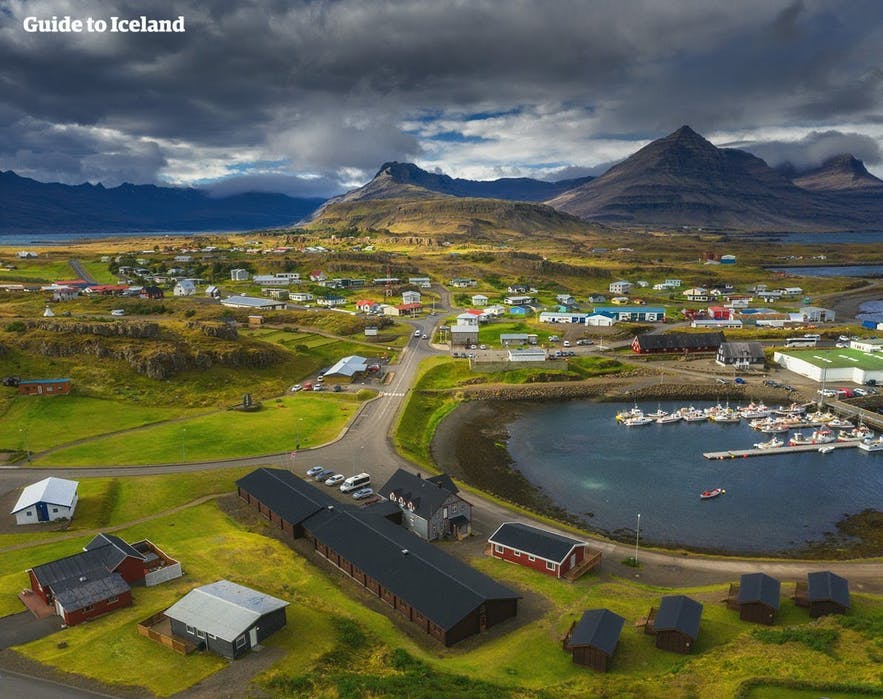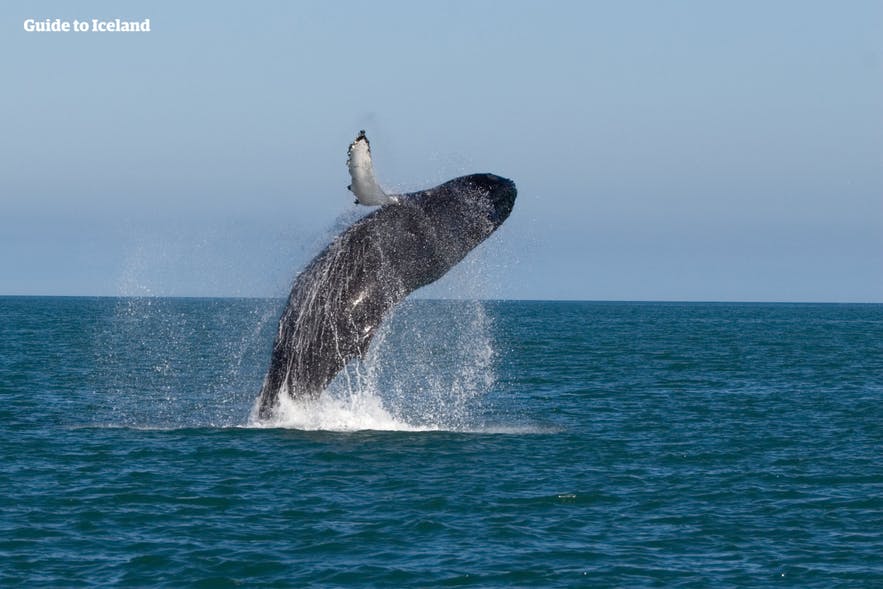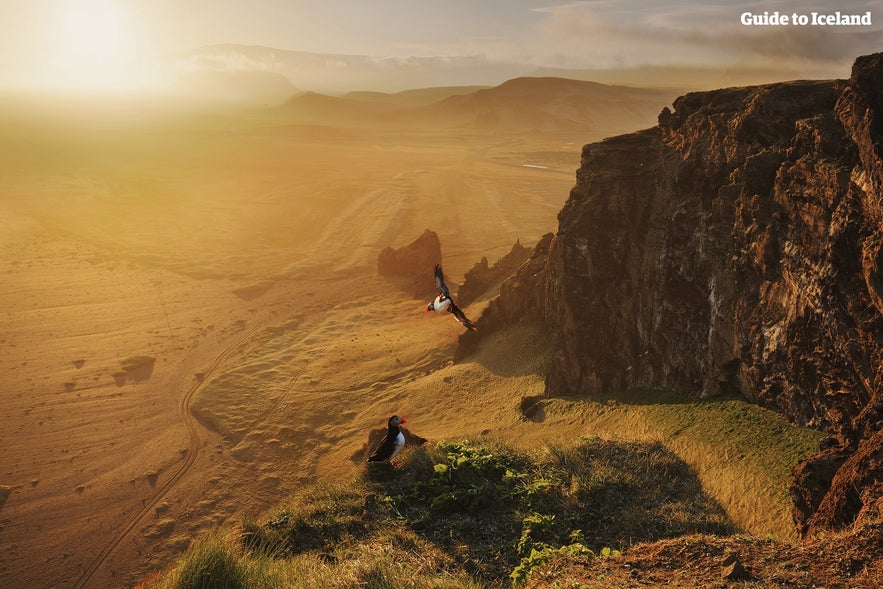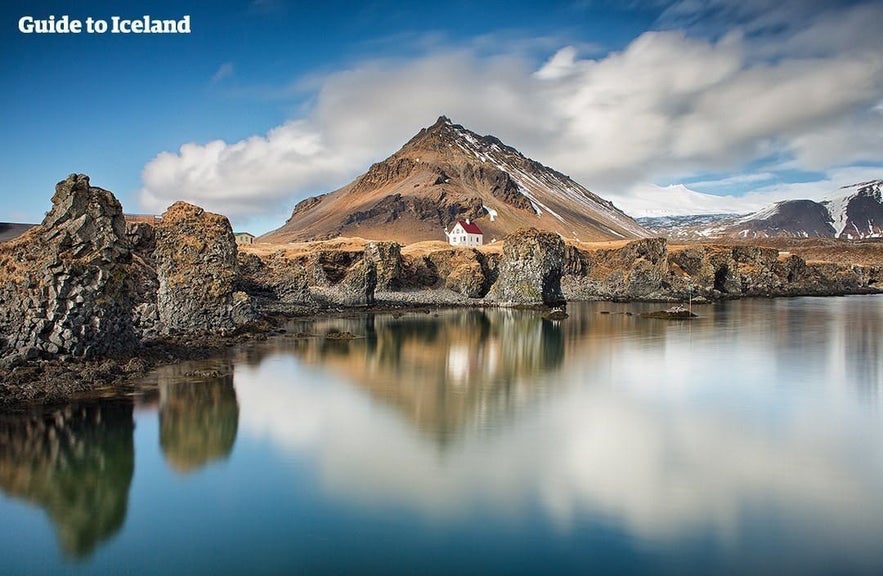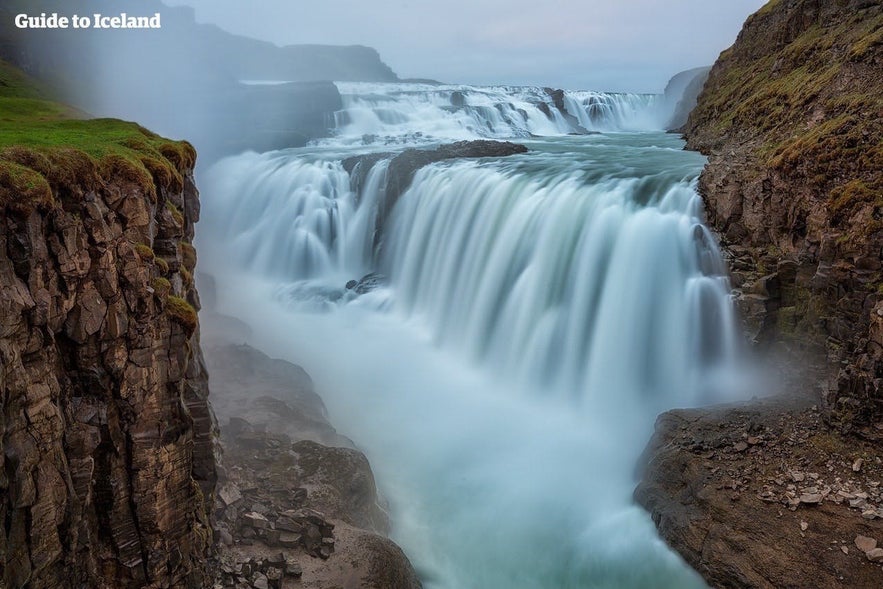
The Perfect Camping Tour Around Iceland
- Day 1: Arrival in Iceland
- Day 2: Golden Circle
- Day 3: Golden Circle & Thjorsardalur Valley
- Day 4: South Coast to Kirkjubaejarklaustur
- Day 5: Vatnajokull glacier to Hofn
- Day 6: Jokulsarlon Glacier Lagoon
- Day 7: Eastfjords
- Day 8: Lake Myvatn
- Day 9: Lake Myvatn and Husavik
- Day 10: Siglufjordur & Troll Peninsula
- Day 11: Skagafjordur Fjord
- Day 12: Snæfellsnes peninsula and Stykkishólmur
- Day 13: Snaefellsnes peninsula and Vatnshellir cave
- Day 14: Reykjavik
- Day 15: Departure
Iceland is the ideal destination for a long stay camping holiday, with a wide array of popular attractions, fantastical landscapes and the majestic midnight sun. To make the most of your camping journey, follow this jam-packed 15-day camping itinerary and take advantage of the rich selection of daily adventure options that we have compiled for your convenience.
Acclaimed fantasy writer and admirer of all things Icelandic, J.R.R Tolkien, once famously wrote, “Not all those who wander are lost.” He was, perhaps, alluding to his characters, strong-headed adventures celebrated for their skill in navigating an unknown wilderness.
Well, forgiving Iceland’s aesthetic similarities to the Misty Mountains, Tolkien was evidently not accustomed to the large swathes of underprepared campers who, over recent years, have begun setting up their tents across our fair land. If he had, he might have written "Not all those who wander are lost... some, though..."
Iceland is, after all, 40,000 square miles of volcanic land, known for its volatile weather, diminutive population, and, quite often, scarcity of passing assistance. In fact, without a fairly large degree of prior planning, the chances of becoming lost whilst sightseeing here rise significantly, an outcome that’s not only dangerous but also an exasperating waste of time - both for the rescue teams and yourself.
This is why, dear reader, we have taken the time to prepare this custom guide for a 15-day self-drive camping tour across Iceland.
15 days is more than ample time for you to visit Iceland's most popular attractions, with our itinerary covering such amazing locations as the Jökulsárlón glacier lagoon, Skaftafell nature reserve, the basalt columns of Reynisfjara, the Snæfellsjökull glacier, Hallormsstaðaskógur national forest, the Gullfoss waterfall, and many more.
There are numerous advantages to keeping yourself self-sufficient throughout your camping holiday: a sense of autonomy, time management, family bonding, serenity, and the opportunity to get up close and personal with the island's nature.
Whatever type of camper you might be, it's a decent bet you are here for the same reasons as the rest; the countryside, the adventure, and the matchless challenge.
Day 1: Arrival in Iceland
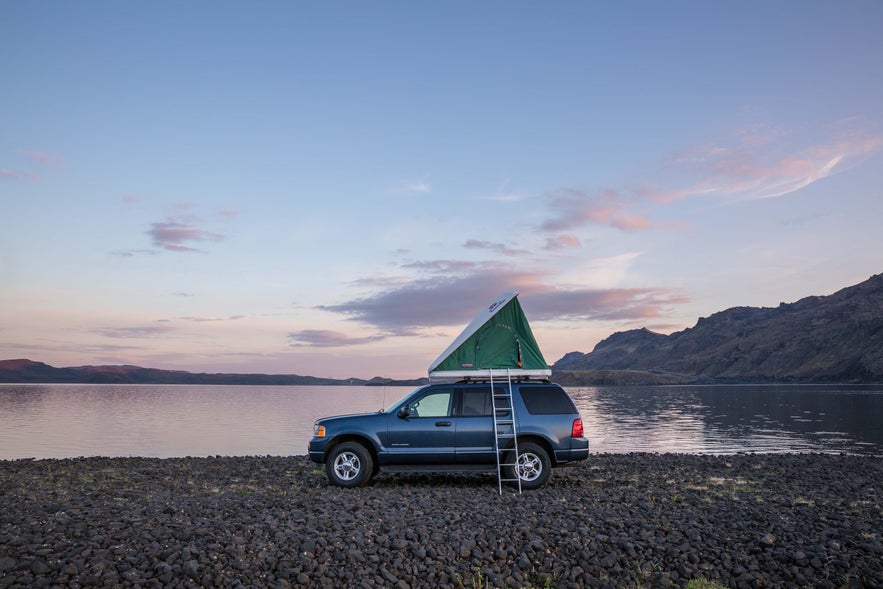
Like the vast majority of arrivals here, you will first land at Keflavik International Airport, located on the northern tip of the Reykjanes peninsula, approximately 50km west of the capital. Here, your rental car awaits, but your choice of vehicle will, of course, determine the number of outcomes for your trip, so it’s wise to make sure you are renting the vehicle that best suits your needs.
Before taking to the road, there are a number of points about driving in Iceland that is worth drawing your attention to. Vehicles always drive on the right-hand side of the road (same as the USA, opposite to the UK), and are obliged by law to keep their headlights on at all times. This law applies whatever season, whatever time of day.
You will also notice that roads here are often elevated in order to help keep them open during heavy snowfalls in the winter. This has, however, lead to cars slipping from the road and rolling over, so make sure to approach each curve, blind corner, and hill slowly! The speed limit for driving here is 50km/hr in urban areas, 90km/hr on tarmac rural roads, and 80km/hr on gravel rural roads.
Please be aware that off-roading driving in Iceland is illegal and destroys the delicate balance of nature. Violators of this rule will, without hesitation, be subject to heavy fines.
When, finally, you are ready to set out on your camping adventure, you will soon discover that Reykjanes is a sampling platter for all that lies ahead on your camping trip. The Reykjanesbraut road (Route 41) is a vein that runs down the length of the peninsula, with smaller side roads branching off toward the southern coast. Most of these roads are paved but don’t be surprised to meet the odd gravel section.
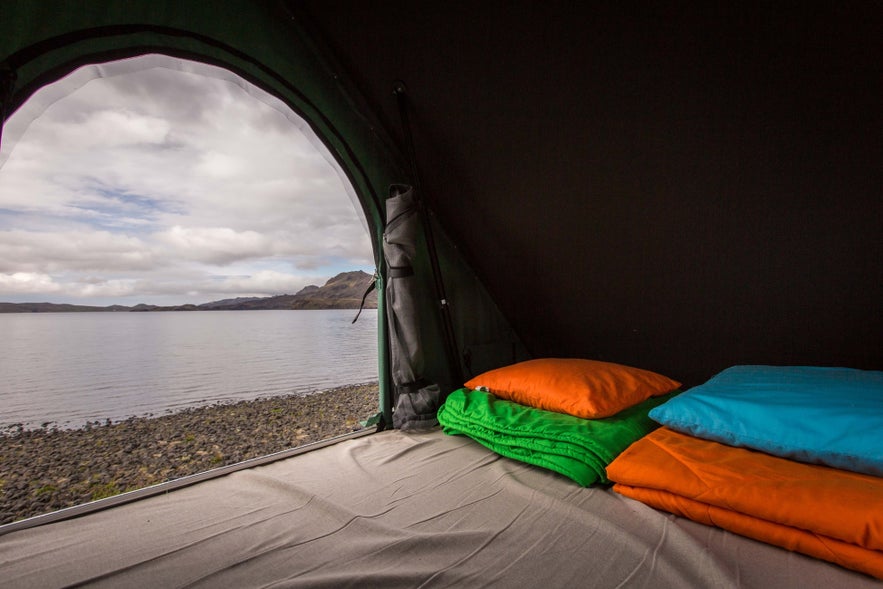
10 minutes off the Reykjanes main road, you will find the incredible sulfur fields of Krýsuvík. Here, enclosed within a ring of bright and colorful mountains, a boardwalk guides you over hot, volcanic vents and geothermal hot springs. Signs positioned along the route provide information on the area’s geology and offer a greater understanding of Iceland’s environmental makeup.
Only a short trip away, you can drive to the Krýsuvíkurberg Cliffs, which plummet vertically into the North Atlantic Ocean, making this one of the most dramatic areas on Iceland’s south coast. At the precipice, you can view nesting seabirds such as kittiwakes and razorbills, a peaceful sight before you head back to the footpaths above.
Next on your to-do list is Kleifarvatn geothermal lake, the largest lake in the Reykjanes peninsula and the namesake of Arnaldur Indriðason’s 2004 crime novel. The lake began to diminish after an earthquake at the beginning of the millennium, cutting it in size by 20%. Aside from its apparent loveliness, you will also find that Kleifarvatn is notable for its variable water temperature and numerous underwater springs.

From here, your journey will take you through jagged lava fields to the Reykjanesviti lighthouse. This was the second lighthouse built in Iceland (the first having been damaged by sea water, and eventually demolished in 1908.) Given the variety of its landscape – the lapping blue of the North Atlantic, the steaming geothermal vents, the coastal rock formations - Reykjanesviti lighthouse has become a favorite spot amongst visitors and locals alike. Make sure you don't miss it!
Of course, driving all the time is enough to make even the most committed road hog exhausted. Why not then trade in your steering wheel for some reigns and explore your surroundings from the back of a small, but hardy Icelandic horse.

Despite their diminutive size, Icelandic horses have a celebrated reputation for playfulness, intelligence and strength, having been purely bred on the island as early as the 10th century. To this day, Iceland does not allow the importation of horses, nor does it allow any horse that’s left the island to return.
Horse riding tours are a fantastic opportunity for you to not only meet and learn more about this distinctive breed but to also experience what travel must have been like for the island’s earliest settlers.
For the first night, you can choose between camping out in Sandgerði or Grindavík.
Day 2: Golden Circle
Time to charter your course along Route 1 – “The Ring Road”! This popular tourist run takes you along the entire Icelandic coastline, providing numerous and welcome sightseeing destinations along the way.
The Ring Road's first attraction is undoubtedly The Golden Circle Tour, Iceland’s most well-loved tourist route. Here, you will cover 300 kilometers (190 miles), first reaching the geothermal valley of Haukadalur, home to the geothermal springs, Geysir and Strokkur. Visitors will be privy to great torrents of water routinely pushing out from underground caverns, again bearing witness to the hot-blooded energy of Iceland’s makeup. Your journey continues past the awe-inspiring waterfall Gullfoss, and finally, Þingvellir National Park.
It will soon become apparent that Þingvellir is one of Iceland’s premier highlights. It is the largest national park in Iceland, and the only one protected with UNESCO world heritage status.
The reasons for this are twofold. First of all, Þingvellir is the former location of Iceland’s parliament, founded in 930 and locally described as the Alþingi. In 1884, the Alþingi was reinstated, this time in Reykjavik, where it still resides to this day.
The second reason behind Þingvellir’s renown is its untouchable beauty and important geological position. The park is situated directly on the Mid-Atlantic Ridge, a field of dried magma located in between two of the planet’s tectonic plates, the North American tectonic plate, and the Eurasian tectonic plate, which sit roughly 3km apart from one another. This area is intricately intercut with valleys, rifts, and gorges, many of which are walkable and offer fabulous insight into the history and culture of this area.
If walking seems a little too much effort for you, it is also possible to take snorkeling and diving tours in Silfra Fissure, located only ten minutes from the Alþingi historical site. Here, you have the chance to swim directly between both tectonic plates (and even touch both simultaneously), whilst revelling in the incredibly clear visibility of Silfra’s glacial water.
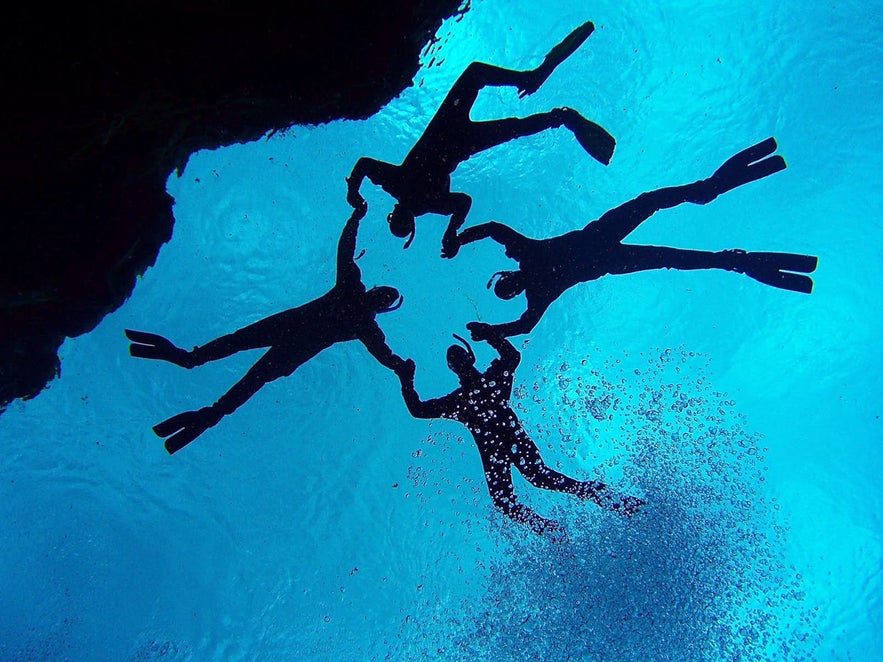 Photo from 3 in 1 Bundled Discount Activity Tours with Volcano Exploration, Snorkeling & Glacier Hiking
Photo from 3 in 1 Bundled Discount Activity Tours with Volcano Exploration, Snorkeling & Glacier Hiking
By the end of day 2, you will be spending the night near the town of Flúðir and can choose between the campsites at Brautarholt or Skjól. In the meantime, off the beaten track, you can find a natural hot pool - commonly referred to as 'the hot river' - to relax in the evening. It's located very much out in the sticks and requires a small hike, so you'll have to ask locals for directions.
The pool used to be used as an old sheep station, where the herd could be bathed for some much-needed defrosting. There is a small, wooden hut that can be used for changing into your swimwear – but don’t expect any amenities! The pool is located on a farmer’s land, though he is happy for visitors to use it, as long as they respect that right. Make sure to take away any litter you might accumulate.
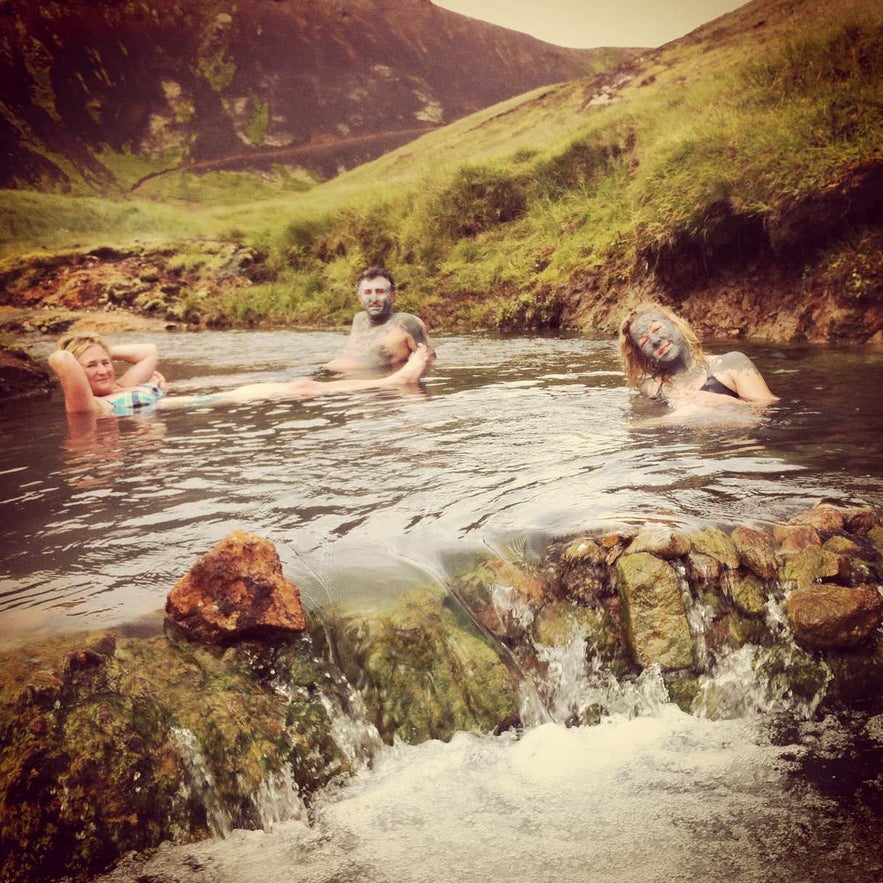 Photo from Hot Spring Hike of Reykjadalur Valley
Photo from Hot Spring Hike of Reykjadalur Valley
If you're more inclined toward the sumptuous 'good life', thankfully there is a little more luxury in terms of bathing still on offer. Iceland is littered with geothermal pools, both natural and man-made, and in Flúðir you can find one that’s a nifty combination of both with The Secret Lagoon. Here, the water keeps a tantalizing 38–40 degrees celsius, providing rejuvenation and an organic Icelandic experience.
There are also numerous other tours available on this leg of your trip, all of which provide a unique method for experiencing your stops on the Golden Circle. Again, horse riding is a popular attraction, as are the Gullfoss snowmobile tours, where you will glide across fields of fresh snow like agents in a Bond movie (in fact, Pierce Brosnan's 007 did just that in Die Another Day, which used Jokulsarlon glacier as its dramatic stage.)
Day 3: Golden Circle & Thjorsardalur Valley
Soon it will be obvious to you that Iceland has no shortage of campsites. In fact, there are over two hundred of them scattered across the country, the majority of which are stocked with amenities; running water, first aid kits, electrical outlets, BBQ grills, children’s playgrounds – sometimes, a little café!
It is best to check prior to departing your journey exactly what each campsite offers if only to avoid disappointment on the day. Before heading out, you should also be aware of these basic tips.
If you just have a tent, you may be able to find spots of uncultivated public land along the main roads to camp on during your trip. This, however, is not legal if you are in a campervan, tent trailer, or collapsable camper, and you must stay at a campsite if you are using such a vehicle. Regardless of how you are camping, staying on private land is a strict 'no' without the landowner’s permission.

If you have finished visiting all the locations on the Golden Circle tour, your third day will take you to the municipality of Rangárþing eystra, in the Southern Region of Iceland. Here, there are a number of campsites to choose from, and among popular attractions in the area are the charming waterfalls of Hjálparfoss and Háifoss, the latter being one of the tallest waterfalls in Iceland.
A short drive away is the gorge, Gjáin, where you are likely to discover many other smaller waterfalls, interesting rock formations, and hidden ponds.
From here (weather permitting,) you might have the chance to get your first look at the volcano, Hekla, standing mighty on the horizon at an impressive 1491m. In the Medieval ages, European monks often wrote of Hekla as “the gateway to Hell”, or “the prison of Judas”, due to its reputation for erupting unexpectedly; a reputation that quickly spread into poetry, art, and folklore.
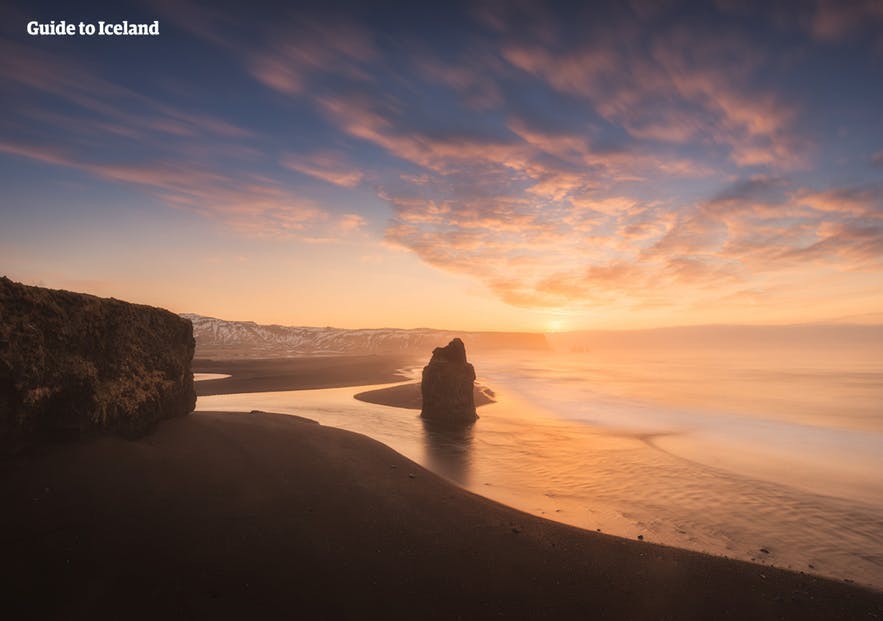
To this day, there are still whispered legends of witches, who on Easter’s day, gather on Hekla's peak to meet the devil himself. Regardless of the superstition, Hekla has erupted over twenty times since Iceland was settled and still to this day arouses some level of concern. Try not to worry too much though - you wouldn't be let near if there was an immediate danger.
Only a short drive away, we recommend Þjóðveldisbærinn Stöng, where you will find an actual, reconstructed Viking settlement. In 1104AD, it was thought that this farmstead was lost under the volcanic ash of Hekla’s eruption.
With full-scale buildings and an exact longhouse replica, the reconstruction was completed in 1974 and stands as a testimony to what life must have been like for those first, Icelandic settlers one thousand years before. If there was any concern about the luxury awaiting at the campsites, Þjóðveldisbærinn Stöng should, at the very least, make you feel grateful.
You would be well advised to pitch your tent by Hvolsvöllur, for example at the campsite Langbrók in Fljótshlíð. You could also choose to journey North West of Hvolsvöllur to Landmannalaugar, a geothermal nature reserve located in the southern highlands. This area is famous for its spectacular scenery and hiking routes; visitors can choose a variety of lengths, ranging from the one-hour jaunt to the four-day trail called the Laugavegur.
The Iceland Touring Association operates a mountain lodge to provide hikers respite, though be aware that this must be booked a long time in advance of your stay.
Day 4: South Coast to Kirkjubaejarklaustur
On the south coast, you will find that campsites become a little more sparse. However, the Kleifarmörk campsite, 2.5 kilometers outside of Kirkjubæjarklaustur, does not disappoint for its natural splendor, nor for practicalities, which include: picnic benches, bathrooms, and a football field.
For the intrepid mountaineers out there, hiking trails are prevalent in this area, such as to Systrastapi, (or “sister’s mesa”), a historical location where rumor claims two nuns were killed for breaching ethical decorum. There is also a waterfall extremely close to the camp itself, and a swimming pool where visitors can enjoy dipping themselves into the warm water.
Kirkjubæjarklaustur is a good venue for you to venture off the beaten path. Hiking through the wild here is one of your best opportunities to have a friendly encounter with one of Iceland’s semi-feral sheep, an animal that could teach us all a thing or two about surviving the harsh Arctic conditions. A handy tip here; avoid angering any rams!
Soon, you will discover the greater area’s main attraction in the stunningly beautiful, but unforgiving, Reynisfjara. For those that have seen it, it is perhaps unsurprising that it's often touted as Iceland’s “coolest beach”. Here, the shoreline is entirely black sand, with huge basalt columns named Gardar that create fantastic natural sculptures into the rock.
Make sure to take the time to revel at the basalt sea stacks that tower 66m from the water’s surface. These stacks are lashed routinely by cruel Atlantic storms, causing the rock to erode into the peculiar shapes that have so come to define the beach. Don't forget your camera - photographs from here will fit nicely on your wall at home.
When you’ve finished strolling up and down the coastline (whatever you do, don’t try to paddle in the water,) the Southern town of Vik is a short drive away, providing amenities and its own visual style, with houses and churches built all along the steep hill faces surrounding the community.
Day 5: Vatnajokull glacier to Hofn
Day 5 is the perfect day to visit Vatnajökull, Iceland’s largest glacier - covering a staggering 8% of the country - and the second biggest glacier in Europe. With a total area of around 8000km squared, and ice averaging 400m thick, there are a wide number of operators using Vatnajökull as their prime location for glacier tours.
On these trips, you will experience firsthand how earthquakes, underground springs, and ice-melts all came together to form the matchless, structural magnificence of the glacier. Don't worry about slipping - your guides will take you through, step by step, how to navigate the ice.
Some tours even offer the opportunity to climb sheer walls with ice axes; just another example of the adventure lying in wait on your camping tour. Talking of axes, Vatnajökull was one of many shooting locations for the most recent series of HBO’s Game of Thrones. Here, more than ever, you can truly imagine yourself as a member of the Night's Watch, scaling the enormous face of The Wall. Thankfully, no enemies on top!
Health has always been seen as one of the benefits of camping, far more so at least than staying in a downtown hostel. It’s in the fresh air, the long walks, the physical obligations that come with living life in the wild. And, there is no place wilder in Iceland than Skaftafell, where you will spend the night.
Historically a farmstead following the settlement of Iceland, the entire community was destroyed following the 1362 eruption of Öræfajökull. Since that day, the region has been anglicized to ‘wasteland,’ or Öræfi in Icelandic.
Nowadays, you will find the preservation is anything but a wasteland, nestled in the mountainous Öræfasveit region of Southern Iceland. It was, until 2008, its own national park, before being merged into Vatnajökull National Park.
Discover how this is an area of stark contrasts, and in many respects, differs from the rest of the island dramatically. The warmer temperature and longer sunlight hours make Skaftafell a haven for humans and animals alike, with a large number of Arctic foxes, mink and bird species (eg; redpoll, redwing, wren, etc.) calling the area home.
Unlike anywhere else in the country, Birch and Willow trees are now beginning to slowly colonize the land, spurred on by a constant underground flow of glacier water.
Day 6: Jokulsarlon Glacier Lagoon
And so we snake our way through the south and towards one of Iceland’s more breathtaking regions, the glorious Eastern Fjords. The glacial lagoon, Jökulsárlón, will be your number one stop, a location where enormous icebergs bob up and down in the vermillion blue waters resting at the base of Breiðamerkurjökull glacier.
Standing on the shores of this lagoon, you are certain to be filled with an enormous sense of serenity and peace. To take a look at these icebergs up close, the Zodiac Boat Tour is a necessary purchase. Prepare to be donned in protective suits and life jackets before the boat glides effortlessly across the water, getting closer to the icebergs than ever before, and even sailing right to the glacier’s edge.
Seals are a common sighting here, playing in the surf, as are the red-throated loons, who are ferociously protective of their nesting grounds (best to keep on the designated paths if you wish to avoid having your head pecked.) At the end of the day, you will arrive at the campsite of Egilsstaðir, the largest settlement in the Eastern Region, and that is where you will spend the night.
Day 7: Eastfjords
If you were to look at the Austfirðir region on the map, the first thing you might notice is how wavy and indented the landscape is against the ocean. This is because we’re in Fjord country now, the East of Iceland. Here, you might notice how historical settlement has subtly changed the culture of the communities that live here.
In Fáskrúðsfjörður, signposts are written in both French and Icelandic and in Seyðisfjörður, where you'd be well advised to spend the night, the architecture is conspicuously Norwegian. Nevertheless, the activities on offer in the East are as Icelandic as Hákarl – making it an absolute essential stopover on anyone’s visit.
Taking a scenic hike up Mt. Snæfell is one of the most popular activities in the Austfirðir region. Outside of the glaciers, this is the tallest freestanding mountain in Iceland, with its peak reaching a colossal 1853 meters. As a matter of fact, the peak is so high that the snow never leaves, even in the summer months. It will tower on the horizon throughout your time here.
That's extremely good news if you happen to be a backcountry skier. But alternatively, if that sounds like a bit of a slog to you, there’s always the option of hopping aboard a super jeep, being driven up Mt. Snæfell as part of a day tour, and concluding your trip with a tranquil bath in a geothermal hot spring.
Day 8: Lake Myvatn
One of the most enjoyable things (or, maybe, lack of things) about camping in Iceland is the fact there are no mosquitos. There are, in reality, barely any insect species at all. The only exception to this is the tiny midge (or gnat), a six-legged nuisance you will find near most bodies of water across the Nordic states. In summer, you will no doubt meet millions of these little residents.
Fittingly, Mývatn (midge lake) takes its name from this pesky camping companion. If you decided to visit in the summer months, it might be sensible to consider wearing a fly net or other added protection, if only to prevent any feelings of annoyance whilst trying to enjoy the scenery.
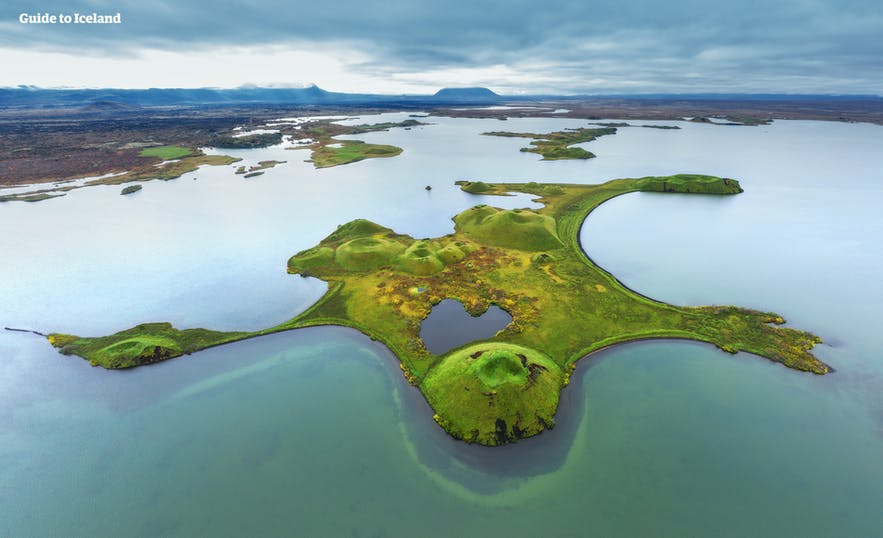
Mývatn is one of Iceland’s most stunning and wild natural preserves on the island. The Mýtvatn area itself acts as something of a natural museum. Volcanic landscapes - the Námaskarð Pass, the Skútustaðagígar pseudo-craters, the fantastical Dimmuborgir (‘Dark Castles’) lava formations – all give this region a new flavor and a new bump to your trips’ motivation. Whenever you think Iceland has shown you all it has to offer, it comes back and surprises you!
On day eight you can stay at either Fjalladýrð or Heiðarbær.
Day 9: Lake Myvatn and Husavik
Given, by now, the physical exhaustion you are bound to be feeling from your trip, a day of pampering and relaxation in the Mývatn area is almost a necessity. Why not throw in a spa day at the nearby Mývatn Nature Baths?
105km from the northern capital Akureyri, these natural pools are the perfect spot for letting your hair down, taking a few deep breaths, and relaxing those muscles! The sulfur rich baths are excellent for respiratory repair, healthy for the skin, and, again, provide ample rest from the road and the camper van. The beautiful scenery of Mývatn and its surrounding areas can easily be enjoyed from the pool, making it a faultless engagement for the road-weary traveler.
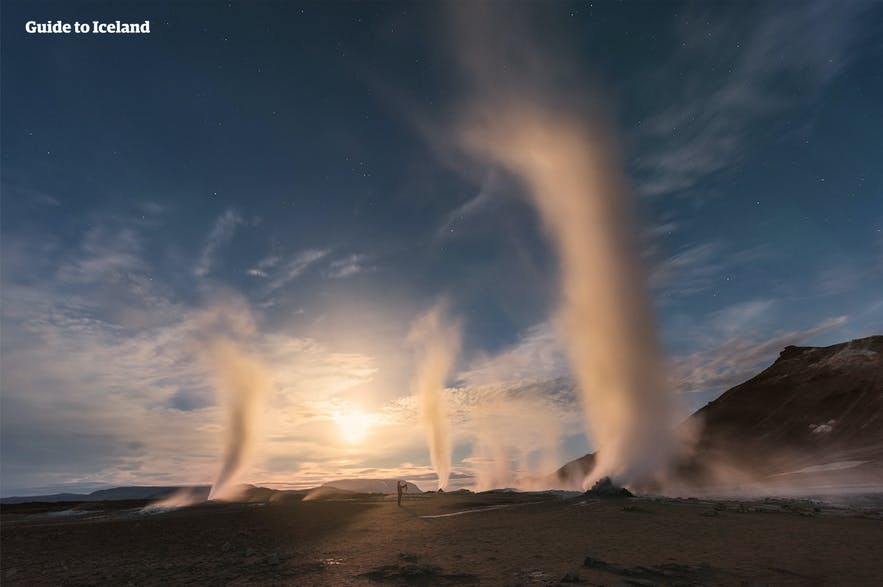
After reenergizing at the Mývatn Nature Baths, there is the opportunity for you to experience whales in their natural environment with the Gentle Giants Whale Watching company or North Sailing Whale Watching Company, both based in Húsavík.
Whale watching up north is widely regarded to be superior to that down south – whale/dolphin sightings are more frequent, more varied, and complimented by the surrounding mountains, whilst boats tend to be less crowded, making for a more personal, intimate experience with the whales.
Other options for the day include driving yourself through the Jökulsárgljúfur area of the Vatnajökull National Park, taking in the breath-taking beauty of the verdant, horseshoe-shaped Ásbyrgi canyon (where folklore dictates that Óðinn’s horse, Sleipnir, tread his hoof down while running through the sky.) Also, in the area is the spectacular waterfall, Dettifoss, Europe’s most powerful waterfall, which you might remember from the opening of Ridley Scott’s ‘Prometheus’.
You can continue your stay at Fjalladýrð or Heiðabær campsites, or change it up with a stay at the Lónsá guesthouse, situated just by Akureyri.
Day 10: Siglufjordur & Troll Peninsula
Siglufjörður is best known for a massive mid-20th-century boom in herring fisheries and the town still upholds the legacy of those years with an annual Herring festival and a herring museum. For ardent fish fans out there (...and I know you're out there somewhere), this is a crucial mark for the calendar.
Off the coast of Sauðárkrókur, you have the island of Drangey, where it is said that the legendary outlaw strongman Grettir of Grettissaga once lived, hiding from both the authorities and, somewhat less convincingly, undead wraiths. Quite the tall tale, but then, quite the tall island... At Drangey you have the chance to get up close and personal with the large population of puffins and other seabirds, who use this isolated outpost as a regular nesting ground.
Both are charming, authentic fishing villages with a lot of character and, of course, great seafood. The north offers a range of activities such trout and salmon fishing in the Hólsá river or white water rafting in Jökulsá.
For day 10, your options for campsites are limited to Siglufjörður or Sauðárkrókur.
Day 11: Skagafjordur Fjord
Today you will be camping out at Hvammstangi where you can visit Borgarvirki, the natural basalt fortress which Viking settlements indicate may have been used for military purposes. You can also check out the Vatnsnes peninsula, home to the largest seal population in Iceland, with views over the majestic Hvítserkur basalt stack.
If you are a fan of seals the Icelandic Seal Center at Hvammstangi is bound to delight. Acting as both a museum and tourist information bureau, visitors hear can learn about the variety of breeds in Iceland, their behavior how their produce was historically used by fishing settlements in the North.
It is also another chance for the family to delve further into Icelandic folklore and see for yourselves how this blubbery creature has affected the traditions and myths held so dear by the local population.
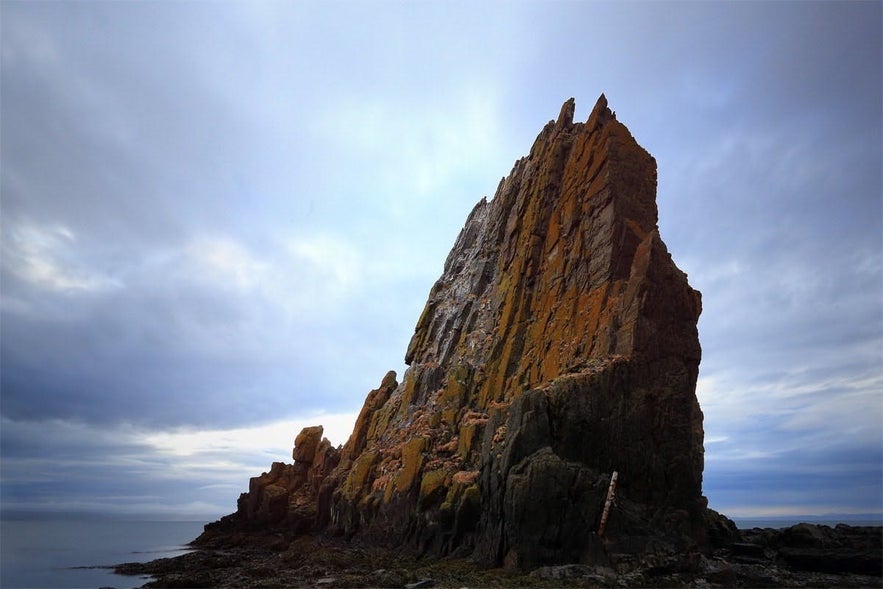
Or perhaps, you’re growing a little tired of all this epic wildlife and wish, instead, to learn more about the people who call these rugged shores home. Why not make a trip to Hofsós and learn about the dramatic story of the Icelanders who, escaping famine, sought a better life sailing west to Canada and the United States? Or, alternatively, shut that inquisitive mind off to lounge in the Hofsós pool, which boasts one of the finest views in all of Iceland.
Day 12: Snæfellsnes peninsula and Stykkishólmur
On day 12, make your way to the Snæfellsnes peninsula, where you can choose between spending the night at Ólafsvík or Hellissandur.
Bedtime is a long way away, however. First, the crown of Snæfellsnes, the glacier Snæfellsjökull. This dormant stratovolcano is over 1446m high with a 200 m deep crater. Legends abound about this mysterious place; some claim for the glacier’s healing properties, others that it is an extra-terrestrial rendezvous point.
In Jules Verne’s classic science fiction novel Journey to the Centre of the Earth, Snæfellsjökull serves as the entrance point for Prof. Lidenbrock’s subterranean journey – “Descend, bold traveler, into the crater of the jökull of Snæfell, which the shadow of Scartaris touches (lit: tastes) before the Kalends of July, and you will attain the center of the earth.” This truly is the place of legends.
Snæfellsnes is also a rich area for foodies. Take a sip from some of Snæfellsnes’ many natural mineral springs, taste the delicious ice cream and Skyr confectionaries at the Erpsstaðir creamery, or visit the Bjarnarhöfn shark museum, where you can learn about the wonders of the Greenland shark and how Icelanders have processed and eaten the fermented delicacy for centuries.
Also make sure to stop in at the Viking Sushi Adventure for the chance to taste fresh scallops and sea urchins, straight from the Atlantic Ocean. Fresh seafood does not come much fresher.
Finally, in the town of Stykkishólmur (the largest town in Snæfellsnes), you will find numerous boat tours to leisurely take you around the scenic Breiðafjörður. From within the fjord, you will able to see a number of uninhabited islands that, in the past, have been used as monasteries and trading posts. The largest inhabited island, Flatey, can be reached by ferry in summer, and makes for a short but memorable break from the mainland.
Day 13: Snaefellsnes peninsula and Vatnshellir cave
For your second day on Snæfellsnes, we recommend Iceland’s cave systems for a new burst of adventure. Iceland is positively teeming with thousands of mind-blowing caves, crevasses, and underground tunnel networks – and exploration is available at every skill level.
Down in this subterranean universe, visitors will have to walk, crawl and climb their way past dazzling rock formations, underwater streams, and stalagmites. Guides are quick to point out historical tidbits and interesting stops - an ancient sheep skeleton, for instance, or perhaps some rare underground fauna. Soon, you too will be mesmerized by this parallel world hidden beneath your feet.
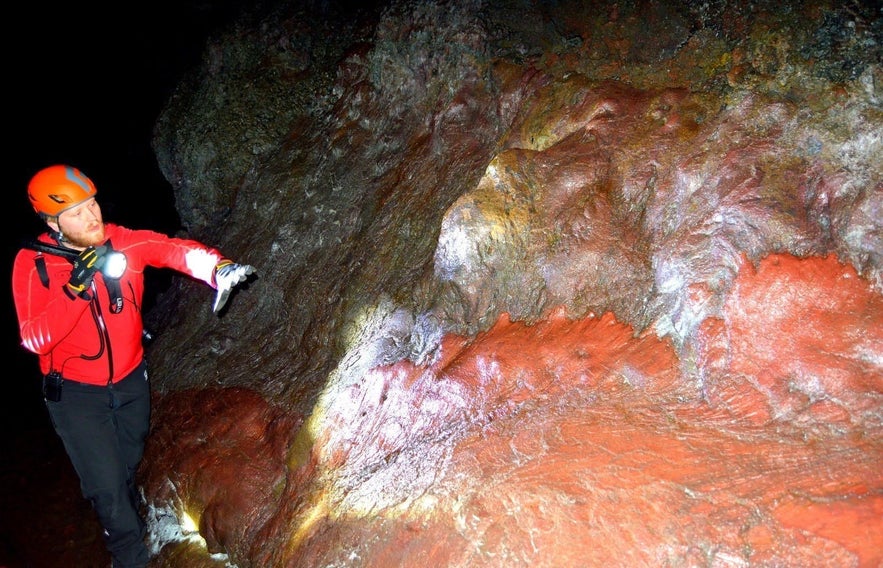
The ideal cave to visit on Snæfellsnes is Vatnshellir Lava Cave, opened to the public in 2011 and fairly typical of most caves in Iceland. Measuring 200m in length, the cave is split into two large sections. The top is filled with interesting lava sculptures built in and around the lava tube itself, whilst the bottom (only recently discovered) is a place of gloom and mystery.
Here, your guides will have you sit down, turn off your headlamps and listen. This is experiencing darkness like never before. Almost complete sensory shutdown allows the drip drip drip of water to echo both through the void of the cave... and the void of your mind.
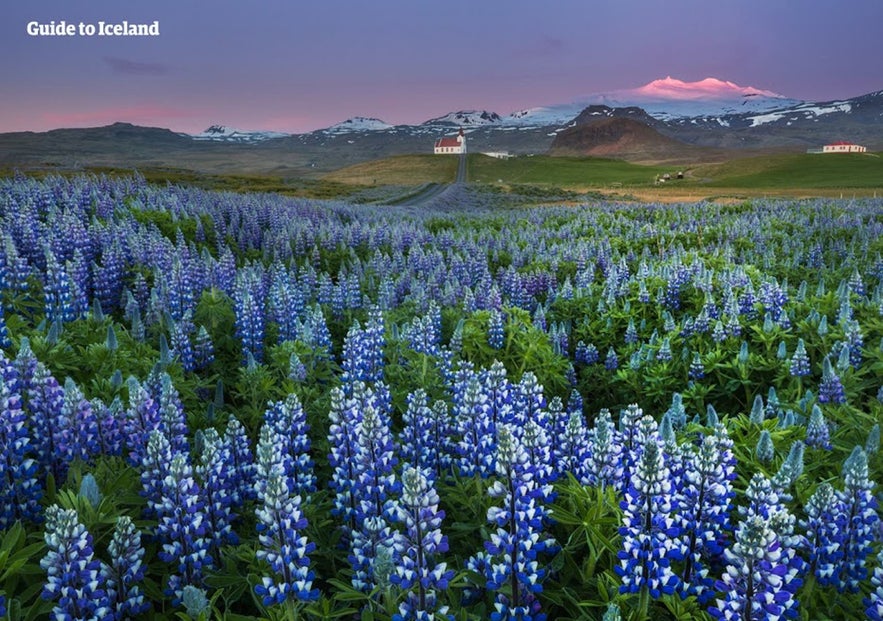
When, finally, it’s time to feel the sunlight on your face once again (or, at least, get some fresh air – this is Iceland, after all), you can drive a short distance to the deserted farmstead, Ytri-Tunga, a beach spot well known for spotting seal colonies. Here, both grey seals and common seals congregate, playing together in the surf, or lounging on the where they, like us, enjoy the rare spells of sunny weather.
If not seal spotting, Snæfellsnes still has plenty to offer you. One can take a romantic stroll down the golden beaches of Langaholt, or stop by the natural harbor, in the fishing town of Arnarstapi, with its beautiful rock formations and large Arctic Tern colony.
On day thirteen you can choose between staying at campsites in Ólafsvík, Hellissandur, or Eldborg.
Day 14: Reykjavik
Finally, you make your way back to the capital city, Reykjavik where you would do well to spend the night in the Laugardalur Campsite.
When making your way down from Snæfellsnes to Reykjavík, you will pass by the Reykholt settlement of famed medieval poet, Snorri Sturluson. Twice speaker of the Alþingi, Sturluson contributed art, poetry, and politics to the newly formed country and was early, but defining, catalyst toward the culture we know and love today. Here, you can find relics of his bathhouse, his own geothermal pool, and farm. From there, only 20 km from Reykholt, lies the Hraunfossar waterfall and the gloomy cave of Víðgelmir.
Just on the outskirts of Reykjavík, in the satellite town of Mosfellsbær, you will pass by the museum of Gljúfrasteinn. Gjúfrasteinn is the former home of Nobel Prize-winning novelist, Halldór Laxness (1902-1998), author of the classic Icelandic novel, Independent People, amongst many others.
Discounting the historical sagas, Independent People is perhaps the most important book in modern Icelandic literature and can be found in bookshops and homes across the country. Laxness shaped the world of his characters and changing culture meticulously, leaving behind a work that offers precise, insider insight into the Icelandic national character. His home has been maintained beautifully since his writing days, and now the museum celebrates the life of legacy of his literary influence. Why not give it a read during the quieter moments on your trip?
Finally, we reach the northernmost capital in the world, Reykjavik! The city has everything a capital could offer: fine dining, theatres, museums, delicious street food, swimming pools, retail outlets, super malls, bars, cafes, cinemas, parks, and music halls. By day 14, it might come as a relief to take a break from the wild of Iceland’s nature – go for a swim, put on your finest suit (if you still have one!), and take to Reykjavik’s streets.
Once you arrive in Reykjavík, opportunities to diversify your trip soon become apparent. Don’t be surprised to find yourself lost amongst the choices city living provides. Not only this is a good opportunity to visit the local stores and pick up some souvenirs and warm wool clothing, but also to visit the museums and galleries sprinkled around 101.
There should be something for everyone: The National Museum, showcasing Icelandic heritage, new and old, or Whales of Iceland, which hosts full scale replicas and interactive educational. If neither of those takes your fancy, perhaps the Reykjavík Art Museum, displaying the best in local and international art throughout three separate locations across the city.
Finally, there is the charming Árbæjarsafn outdoor living-history museum. Having opened in 1957, this living, breathing museum provides a fascinating insight into the working lives of settlers and those who struggled to survive the earliest, harshest days of Iceland's history.
Day 15: Departure
And so we come to the end of our journey. We have traveled by camper car over 1300km, sampling the full range of wonders that Iceland has to offer. If you are lucky enough to have a late flight, then check out the famous Blue Lagoon for a final soak. By now, you will be well acquainted with the pleasure of relaxing your body into Iceland’s naturally warmed pools, but it doesn’t hurt to have one last dip before your flight!
If you wish to add a few more days, just let us know, and we'll help to arrange it for you. Keep safe out there!
- Check out our guide to Camping in Iceland | All You Need to Know
- Pack your tents for an 8 Day Self Drive Tour | Circle of Iceland Camping Trip
- Follow the link to get the best Tips for Backpacking in Iceland
- See also: Tips for backpacking in Iceland
Other interesting articles
What to Do With 8 Days in Iceland
What are the recommended means of enjoying an 8-day holiday in Iceland? What activities are available, and how do they differ between the summer and the winter? Are 8 days enough to fully explore th...Read moreHow to Spend a Weekend in Iceland
Are you planning to spend a weekend in Iceland and want to make the most of your short journey? Here's our version of a perfect weekend trip to Iceland. Enjoy an adventure that includes The Golde...Read moreIceland on a Budget | 7 Affordable Days of Adventure
How can you spend a week in Iceland without breaking the bank? Is it possible to travel cheaply in Iceland while still partaking in the activities on offer? Find out how to spend seven affordable ad...Read more

Download Iceland’s biggest travel marketplace to your phone to manage your entire trip in one place
Scan this QR code with your phone camera and press the link that appears to add Iceland’s biggest travel marketplace into your pocket. Enter your phone number or email address to receive an SMS or email with the download link.

